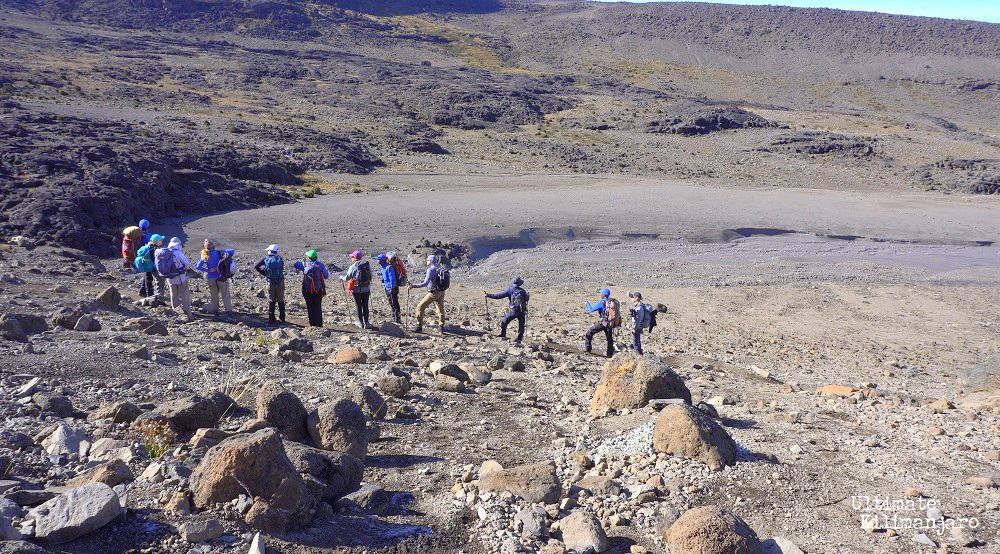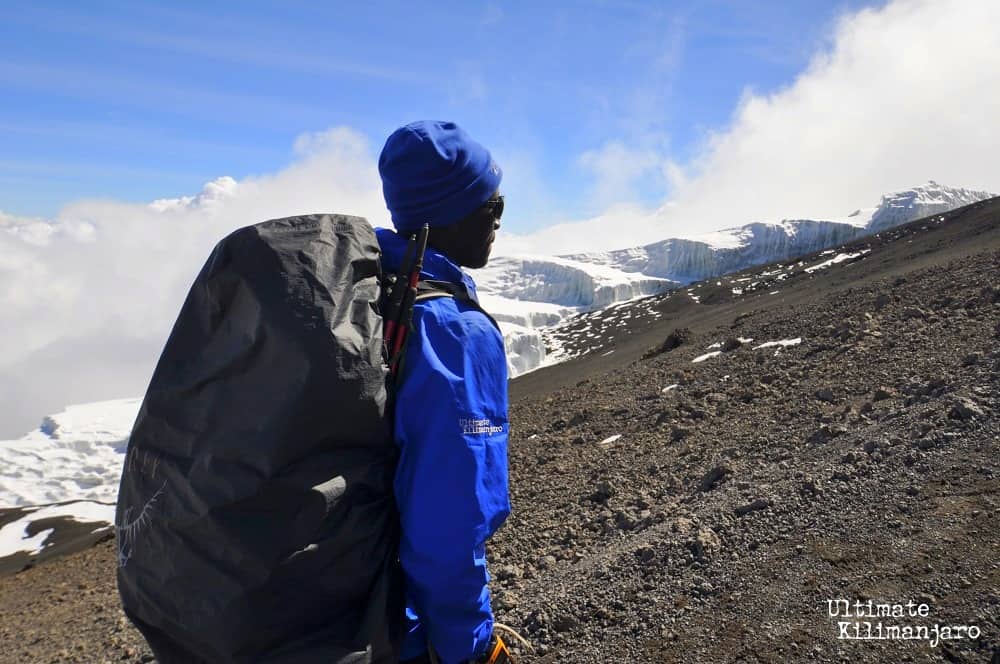The trails on Mount Kilimanjaro are well marked and maintained. That means they are easy to follow and generally easy to tackle.
Technical skills are not required on our routes. There are only a couple places where scrambling (climbing on hands and feet) is required. And there are no points where exposure to falling off a cliffside is a legitimate threat.
Your guides will be ready to spot you in any particularly challenging spots when necessary.
Trail Conditions in Ecological Zones
For the most part, Kilimanjaro routes begin at the base of the mountain between 5,000 and 8,000 feet and top out at the summit at 19,341 feet. Given the significant altitude change from top to bottom, the topography changes drastically during the climb. Each ecological zone you enter will present a different trail condition.
Rainforest Zone Trail Conditions

The journey begins in the beautiful rainforest at the base of Mount Kilimanjaro. The trail here consists mainly of volcanic soil, red clay, and exposed tree roots. This ecological zone gets an enormous amount of rainfall annually. So the path here is usually at least a little wet and muddy. This is why it is important to have proper hiking boots or shoes that have good tread.
Shorts or hiking pants and a tee shirt or long sleeve base layer make the ideal outfit as long as it isn’t actively raining. If it is, then you’ll need your rain gear. Trekking poles also help to navigate the landscape.
Moorland and Alpine Desert Zone Trail Conditions

Farther up, in the moorland and alpine desert regions, the trail turns into dirt and rock. Usually, it’s very dry and dusty. However, this makes the path fairly easy to walk on as the ground is firm and stable. Most of the time you will spend on Kilimanjaro will be in these two zones, which is an advantage considering this substrate requires the least amount of effort to get around.
Although it is cooler here, most of the times hiking with a baselayer and hiking pants is sufficient. But if temperatures are lower or if it’s cloudy or windy, then adding a midlayer or hard shell will typically be enough to ward of the cold.
Don’t forget to wear a cap and sunglasses to shield your face from the deceptively powerful sun, even if you don’t feel its heat. And apply sunscreen to any exposed skin regularly. It’s not uncommon to get sunburned in the first few days if you’re not diligent in protecting yourself from the sun.
Arctic Zone Trail Conditions

Finally, as you approach the summit you enter the artic zone. This is where you will encounter the harshest conditions. You should expect that it will be very cold and windy, especially at night.
The path to and from Uhuru Point requires a steep ascent and descent on loose gravel called scree. Trekking on this terrain can be especially tiring. Your feet sink into the ground and the rock shifts under your bodyweight. Gaiters help keep the rocks from getting into your shoes and trekking poles will help you balance.
Depending on the season, it’s possible that there will be snow on the ground. However, most of the time it’s hard packed and no cause of concern. (Note that it is very rare for crampons or microspikes to be used. You don’t need them unless we specifically instruct you to bring them.)
The average hiker wears four to six layers on top and three layers on the bottom during the nighttime push to the summit. But it will be warmer on the descent after the sun comes out.
Remember that bad weather conditions can come at any time, no matter where you are on the mountain. So climbers should be prepared to trek through all types of weather (sunny, foggy, rainy, snowy) and all types of terrain (firm dirt, loose dirt, dusty, muddy, wet, snowy, icy) during their journey.
Final Words
In conclusion, the trail conditions on Mount Kilimanjaro will vary from top to bottom. The changing surroundings is what makes climbing Kilimanjaro interesting as there are always new things to see and experience every day.
By trekking and mountaineering standards, the terrain on the primary routes don’t present any overwhelming obstacles that the average person wouldn’t be able to overcome.



















































